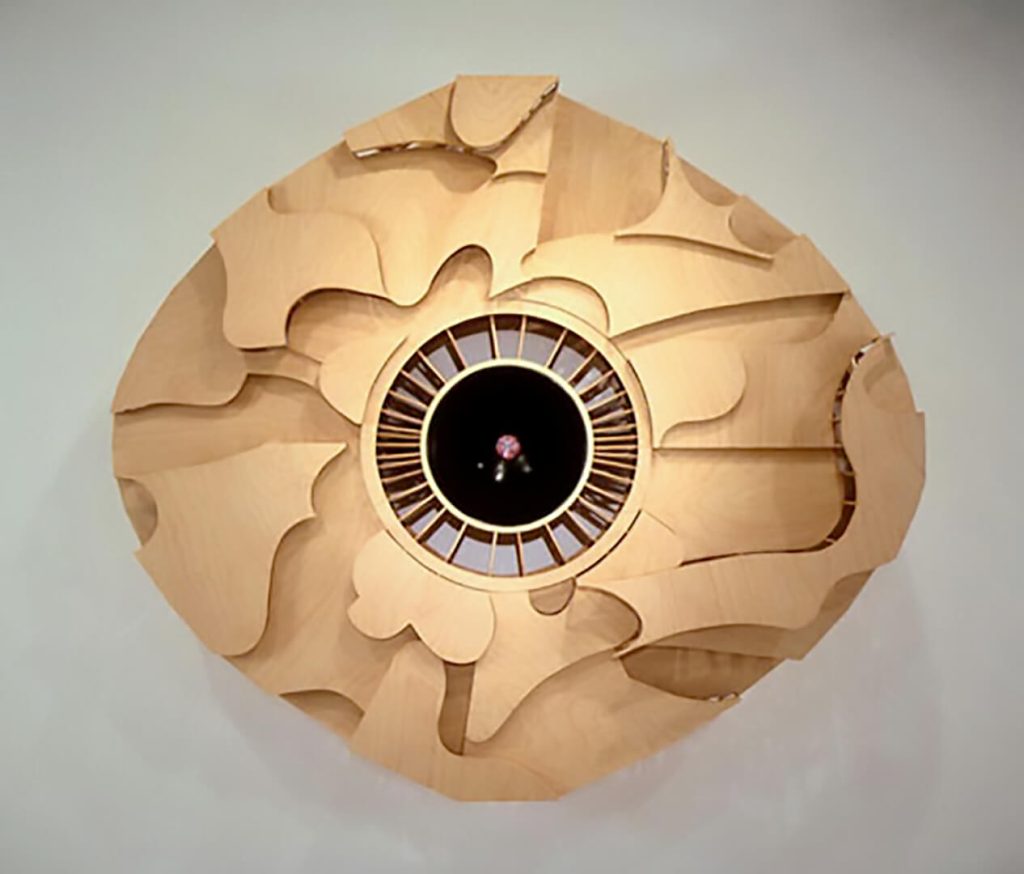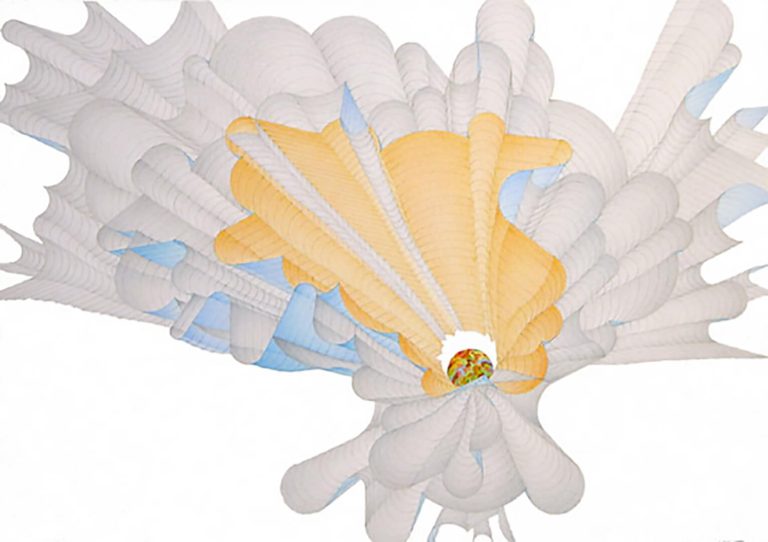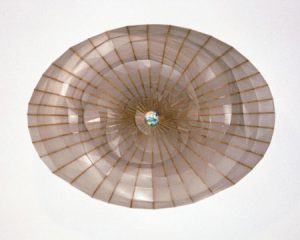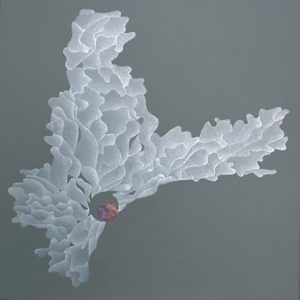How to understand the world and the universe
by Cynthia Nadelman

Embedded somewhere in almost every one of Joe Neill’s sculptures is a tiny painted sphere, or sometimes a cylinder- a colorful core of some type, at any rate . Shaded like the earth as seen or visually recorded from space, this colorful kernel at once represents optics, atmosphere, light – and art.
For while the colors in and of themselves are no more art than science, like all of Neill’s oeuvre, they display the free will of the artist at play with science. From the concepts and principles alluded to, to the very method of alluding, there is in Neill’s work, above all, respect for and fascination with the scientific process. That said, though, the artist gives himself free rein. His actual constructions do not really illustrate anything – except a style of thinking and of conceiving of the world and the universe.
So, the little sphere might be taken to represent the rest of the sculpture in macrocosm or in microcosm – depending on what surrounds it. Like a line in a poem, it may be the very substance, or subtext, of the whole, or it may be the context for the whole. In this little sphere resides Neill’s very own poetic license.
Looking at Neill’s drawings, one comes to realize how related they are to the little spheres. They stand in relation to the body of his sculptures somewhat as the spheres do to each individual sculpture. This is most obvious in their colors – though they are primarily drawn in colored pencil, while the spheres are painted. The shades are soft and pastel, the colors of childhood. They combine seemingly scientific means with fantasy and whimsy.

Much like the construction of the sculptures – which combine the pragmatism and rationality of building with science-inspired schemata and make-believe scenarios – these drawings are actually designs without purpose. They may be sculptors’ drawings – and indeed they seem so in their attention to multidimensionality – but they have nothing to do with eventual plastic or concrete realizations of form. They, like the sculptures, are playthings – using various vocabularies that have been developed for deconstructing form and for creating models of both the interior of the earth and the structure of the universe. They also bring a new element into Neill’s work – namely, the depiction of imaginary instruments, vehicles, and space-station-type machines, or hybrids of all of the above.
Here, in the visualization of ideas, is where Neill has discovered the nexus of art and science, particularly sculpture and science. He builds bridges between the conceptual and the visual – in contrast to recent conceptual trends that have taken instead to overlooking the visual. One never tires of looking at Joe Neill’s configurations of space and color. The flourishes provided by his drawings, as well as by the little spheres, are something like a signature. As clear a metaphor as an old-fashioned artist’s palette, these flourishes say : « This may at times look like something else, but it is at all times art, and art of a high order ».
Cynthia Nadelman
Cynthia Nadelman is an art critic, editor, and poet. She is a contributing editor of ART NEWS.




